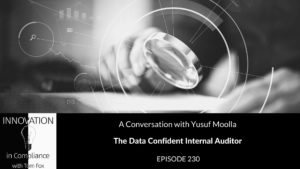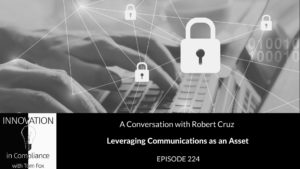As the NY Mets have the best record in baseball and we prepare for the celebrations of Easter and Passover, Tom and Jay are back to look at some of the week’s top compliance and ethics stories in the Ng Convicted edition.
Stories
-
- Roger Ng was convicted. Tom in the FCPA Compliance and Ethics Blog.
- Lessons from DOJ’s first cyber fraud settlement? Annie Hudgins in the FCPA Blog.
- Depression as corporate materiality issue. Dick Cassin in the FCPA Blog.
- Should CCOs be required to certify compliance programs? Mike Volkov in Corruption Crime and Compliance.
- CEO fined by SEC for impeding whistleblower. Aaron Nicodemus in Compliance Week. (sub req’d) Matt Kelly in Radical Compliance.
- How much BOD oversight of compliance is enough? Jeff Kaplan in Conflict of Interest Blog.
- Compliance in recessionary times. Jim DeLoach in CCI.
- Water and corruption. Rick Messick in GAB.
- Why should an organization disclose diversity information? Antinuke Adrian in Harvard Law School Forum on Corporate Governance.
- Data governance best practices. Eray Eliaçik in Data Economy.
Podcasts and More
- Tom visits with Matt Galvin and Dan Kahn over a 2-part podcast series. In Part 1, they talk about dealing with the DOJ during an FCPA investigation and thereafter.
- Into Star Trek, then join Tom and John Champion, who is on a 15-year mission to do a podcast on every episode of Star Trek, television, movie, and animated show on the podcast MissionLogPodcast.com. In Part 1, from TOS up to the start of TNG. In Part 2, from TNG to today.
- This month on the Compliance Life, I visit with Susan Divers, Director of Thought Leadership at LRN. In Part 1, academic life and early professional career. In Part 2, she moves to the corporate world.
- Why should you attend Compliance Week 2022? Find out on this episode of From the Editor’s Desk. Listeners get a $200 discount to CW 2022 with the code Fox200. More here.
- Join Tom and Jay at ECI Impact 2022. Listeners to this podcast can save 20% off registration
by entering discount code: TOM20 at checkout. - Welcome back, Sam Rubenfeld.
Tom Fox is the Voice of Compliance and can be reached at tfox@tfoxlaw.com. Jay Rosen is Mr. Monitor and can be reached at jrosen@affiliatedmonitors.com.





